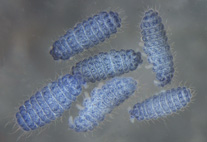Abstract
In taxonomic accounts, three species of Myotis have been traditionally reported to occur on the island of Taiwan: Watase’s bat (M. formosus watasei Kishida), the Formosan broad-muzzled bat (M. muricola latirostris Kishida) and the Formosan mouse-eared bat (M. adversus taiwanensis Linde). The discovery in 1997 of an unknown taxon not fitting to the description of any of these species encouraged us to re-examine more thoroughly the systematics and phylogeny of Myotis bats inhabiting Taiwan. We used a combination of morphologic and molecular methods to aid the identification of the different taxa from this island and reconstruct their phylogenetic relationships. Multivariate analyses based on 17 craniodental characters of 105 specimens caught across Taiwan and further external characters allowed us to discriminate eight taxa of Myotinae co-occurring on this island. A subset of 80 specimens were further sequenced for the cytochrome b gene (1140 bp) and subjected to phylogenetic reconstructions including representative species from adjacent China and from all main lineages of the worldwide Myotis radiation. These molecular reconstructions showed that the Myotinae from Taiwan are phylogenetically diverse and are issued from several independent clades. The genetic results were completely congruent with the phenetic groupings based on craniodental and external morphology, as each of the eight Taiwanese taxa proved to be reciprocally monophyletic. Two unnamed taxa that did not fit into any of the known species were described as species new to science. Furthermore the taxon latirostris usually associated to the Asian M. muricola, was phylogenetically and morphologically distant from any other known Myotis and was assigned here to the fossil (Miocene) genus Submyotodon. Submyotodon latirostris, M. secundus sp. n. and M. soror sp. n. are endemic species from Taiwan, whereas the other five Myotis are more widespread and also found in the mainland. An identification key is provided to ease the discrimination of these Myotinae species in Taiwan and adjacent China.

